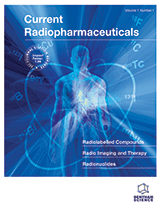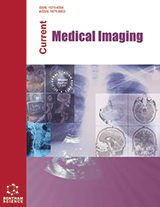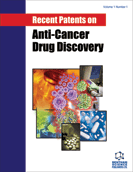Abstract
This article presents a concise review of the production of no-carrier-added (NCA) 177Lu by the ‘indirect’ route by irradiating ytterbium-176 (176Yb)-enriched targets. The success of this production method depends on the ability to separate the microscopic amounts of NCA 177Lu from bulk irradiated ytterbium targets. The presence of Yb+3 from the target in the final processed 177Lu will adversely affect the quality of 177Lu by decreasing the specific activity and competing with Lu+3 complexation since ytterbium will follow the same coordination chemistry. Ytterbium and lutetium are adjacent members of the lanthanide family with very similar chemical properties which makes the separation of one from the other a challenging task. This review provides a summary of the methods developed for the separation and purification of NCA 177Lu from neutron irradiated 176Yb-enriched targets, a critical assessment of recent developments and a discussion of the current status of this 177Lu production method.
Keywords: Electro-amalgamation, Extraction chromatography (EXC), Neutron irradiation, No carrier added (NCA) 177Lu, Peptide receptor radionuclide therapy (PRRT), Separation.
Graphical Abstract
Current Radiopharmaceuticals
Title:Indirect Production of No Carrier Added (NCA) 177Lu from Irradiation of Enriched 176Yb: Options for Ytterbium/Lutetium Separation
Volume: 8 Issue: 2
Author(s): Ashutosh Dash, Rubel Chakravarty, Furn F. (Russ) Knapp and Ambikalmajan M.R. Pillai
Affiliation:
Keywords: Electro-amalgamation, Extraction chromatography (EXC), Neutron irradiation, No carrier added (NCA) 177Lu, Peptide receptor radionuclide therapy (PRRT), Separation.
Abstract: This article presents a concise review of the production of no-carrier-added (NCA) 177Lu by the ‘indirect’ route by irradiating ytterbium-176 (176Yb)-enriched targets. The success of this production method depends on the ability to separate the microscopic amounts of NCA 177Lu from bulk irradiated ytterbium targets. The presence of Yb+3 from the target in the final processed 177Lu will adversely affect the quality of 177Lu by decreasing the specific activity and competing with Lu+3 complexation since ytterbium will follow the same coordination chemistry. Ytterbium and lutetium are adjacent members of the lanthanide family with very similar chemical properties which makes the separation of one from the other a challenging task. This review provides a summary of the methods developed for the separation and purification of NCA 177Lu from neutron irradiated 176Yb-enriched targets, a critical assessment of recent developments and a discussion of the current status of this 177Lu production method.
Export Options
About this article
Cite this article as:
Dash Ashutosh, Chakravarty Rubel, (Russ) Knapp F. Furn and Pillai M.R. Ambikalmajan, Indirect Production of No Carrier Added (NCA) 177Lu from Irradiation of Enriched 176Yb: Options for Ytterbium/Lutetium Separation, Current Radiopharmaceuticals 2015; 8 (2) . https://dx.doi.org/10.2174/1874471008666150312161942
| DOI https://dx.doi.org/10.2174/1874471008666150312161942 |
Print ISSN 1874-4710 |
| Publisher Name Bentham Science Publisher |
Online ISSN 1874-4729 |
 42
42 3
3
- Author Guidelines
- Bentham Author Support Services (BASS)
- Graphical Abstracts
- Fabricating and Stating False Information
- Research Misconduct
- Post Publication Discussions and Corrections
- Publishing Ethics and Rectitude
- Increase Visibility of Your Article
- Archiving Policies
- Peer Review Workflow
- Order Your Article Before Print
- Promote Your Article
- Manuscript Transfer Facility
- Editorial Policies
- Allegations from Whistleblowers
Related Articles
-
How Do Microtubule-Targeted Drugs Work? An Overview
Current Cancer Drug Targets <sup>177</sup>Lu-Labeled Agents for Neuroendocrine Tumor Therapy and Bone Pain Palliation in Uruguay
Current Radiopharmaceuticals The Innate Immunity: Roles for New Antifungal and Antibacterial Peptides Secreted by Chromaffin Granules from the Adrenal Medulla
Current Medicinal Chemistry - Immunology, Endocrine & Metabolic Agents MicroRNAs as Tools and Effectors for Patient Treatment in Gastrointestinal Carcinogenesis
Current Drug Targets Molecular Link Mechanisms between Inflammation and Cancer
Current Pharmaceutical Design Adhesion Molecules in Lung Cancer: Implications in the Pathogenesis and Management
Current Pharmaceutical Design Bcl-2 Inhibitors: Emerging Drugs in Cancer Therapy
Current Medicinal Chemistry Thematic Analysis™ : A Chemogenomic Approach to GPCR Drug Discovery
Current Topics in Medicinal Chemistry Cell Dormancy and Tumor Refractory
Anti-Cancer Agents in Medicinal Chemistry Chromogranin A as a Calcium-Binding Precursor for a Multitude of Regulatory Peptides for the Immune, Endocrine and Metabolic Systems
Current Medicinal Chemistry - Immunology, Endocrine & Metabolic Agents Importance and Limitations of Chemotherapy Among the Available Treatments for Gastrointestinal Tumours
Anti-Cancer Agents in Medicinal Chemistry [177Lu]-DOTA0-Tyr3-Octreotate: A Potential Targeted Radiotherapeutic for the Treatment of Medulloblastoma
Current Radiopharmaceuticals The Role of Neuroendocrine Cells in Prostate Cancer: A Comprehensive Review of Current Literature and Subsequent Rationale to Broaden and Integrate Current Treatment Modalities
Current Medicinal Chemistry Technologies for Translational Imaging Using Generators in Oncology
Recent Patents on Anti-Cancer Drug Discovery Targeting Kruppel-Like Factor 5 (KLF5) for Cancer Therapy
Current Topics in Medicinal Chemistry Radiometal Complexes in Molecular Imaging and Therapy
Current Medicinal Chemistry Novel Subtype Specific and Universal Somatostatin Analogues: Clinical Potential and Pitfalls
Current Pharmaceutical Design Porphyrins as Radiosensitizing Agents for Solid Neoplasms
Current Pharmaceutical Design Tubulin-Targeting Agents in Hybrid Drugs
Current Medicinal Chemistry Current Protein-based Anti-angiogenic Therapeutics
Mini-Reviews in Medicinal Chemistry






















